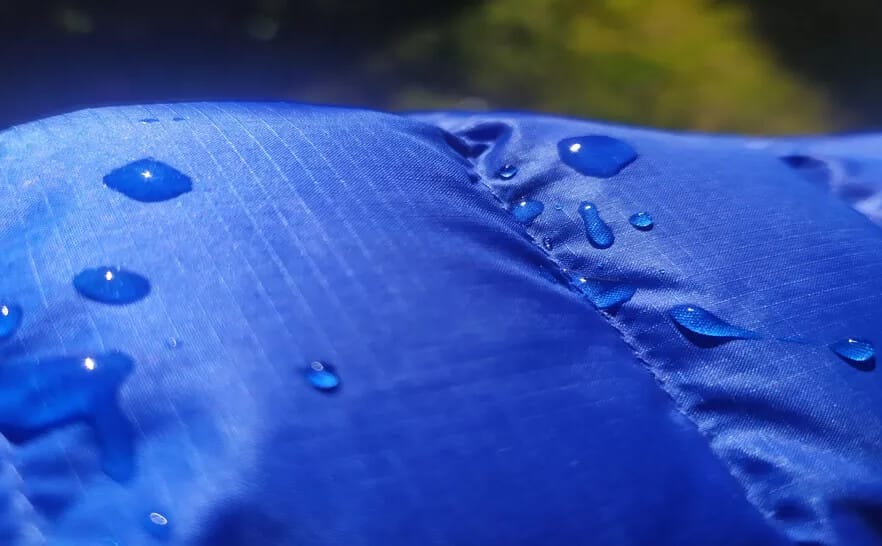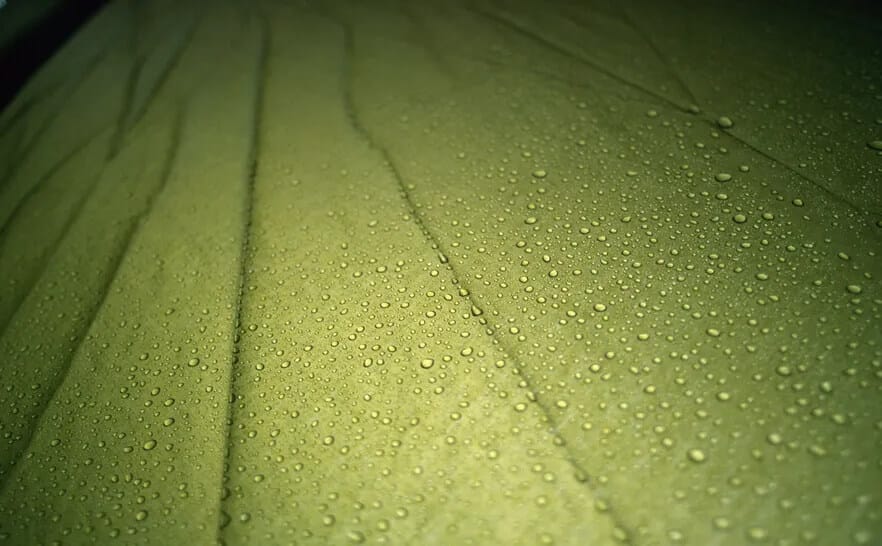
What is DWR? Durable water repellency explained
DWR is a term that every outdoorsperson has come across. But what is DWR and what does it add to your wet-weather gear? This post explains all.
These days, buyers in the market for outdoor door gear could be forgiven for thinking that they need a 50-page glossary of terms or a Ph.D. in something smart and sciency to make sense of all the exotic terminology and endless acronyms attached to product specifications and descriptions.
One such term is the rather stodgy-sounding and nowadays ubiquitous “durable water repellency”, aka DWR. If you’ve ever trawled the stores or sites of online retailers for anything from the best waterproof jackets to best tents or best gaiters for wet-weather adventures, you’ve probably come across the term before. But what is DWR? And do you need it?
In this post, we’ll answer both of these questions and provide further insights into the workings and usefulness of DWR.
What is DWR? The short answer
DWR coatings are chemical treatments applied to the face fabric of garments, tents, and sleeping bags to make them hydrophobic (water resistant). In a few words, the treatments make water bead up on the surface of the fabric by increasing the angle of contact between the fabric and the moisture. A low contact angle between moisture and fabric allows the liquid to spread across the surface of the fabric and soak through, but with a high contact angle, the moisture “beads up” as a droplet and rolls off the surface before it can saturate the weave.
Do you need DWR?
As with all outdoor technologies, whether or not you need DWR depends on what you’re doing. However, if what you’re doing involves venturing far from home in wet conditions, the answer to the above is an unequivocal “yes.
DWR is particularly useful in two scenarios: as a “first line of defense” on waterproof jackets and pants and as a “just in case” add-on to garments or pieces of gear whose main purpose is not keeping you dry but which may come into contact with H20 in the course of a day on the trails or a night camping.
Let’s unpack that a little…
With shell layers, DWR coatings take some of the onus off the waterproof membrane by helping to prevent rainfall saturating the face fabric. In very wet conditions this could make the difference between staying dry and springing leaks, and it also helps the fabric maintain breathability.
With non-waterproof gear such as softshell jackets or hiking pants, the addition of a DWR finish makes the jacket and pants a little more versatile, saving you from having to change into your rain jacket or rain pants in light rain showers or in quite so much of a hurry when the heavens really open.
As a general rule, the best sleeping bags and tent inners all use a DWR coating to prevent saturation by condensation.

DWR ratings
While not always included in product specifications, DWR ratings can help to give you an idea of how effective the DWR treatment on any garment will be and also how long it will last.
DWR ratings are determined using a test that measures the amount of water that remains on the fabric after the water is sprayed onto the surface. Ratings contain two numbers, one that refers to the effectiveness of the treatment and one that refers to its durability.
Effectiveness is determined by the percentage of fabric that remains dry after spraying, e.g. if 90% of the fabric is dry after spraying, the effectiveness rating is 90.
Durability is gauged by repeating the spray test after a certain number of washes. For example, a rating of 90/10 demonstrates that the fabric remained 90% dry in the spray test after 10 washes.
Simply put, the higher the figures, the more durable and effective the DWR treatment is.
DWR maintenance and reapplication
Dirt, sweat, abrasion, body oils, and weather exposure can reduce the effectiveness of DWR over time. After a certain number of uses and washes, therefore, DWR-coated garments need a little TLC to maintain their ability to keep you dry. If you notice that liquid is no longer beading up on the surface of your DWR-coated gear or garments, you can rejuvenate the DWR with spray-on treatments like Nikwax TX Direct Spray-On or Rivivex, or with or wash-in treatments like Nikwax TX Direct Wash-In.
Where to use?
Durable Water Repellent (DWR) coatings are commonly used for a wide range of jackets, particularly those designed for outdoor activities. These jackets include:
Rain Jackets: DWR coatings are applied to rain jackets to make them water-resistant. They help water bead up and roll off the fabric instead of soaking into it.
Softshell Jackets: Softshell jackets often have DWR treatments to provide water resistance while maintaining breathability.
Hardshell Jackets: Hardshell jackets, designed for extreme weather conditions, frequently feature DWR coatings to repel water and provide protection against rain and snow.
Windbreakers: Windbreaker jackets may have DWR coatings to offer water resistance and protect wearers from light rain and wind.
Ski and Snowboard Jackets: Many ski and snowboard jackets are treated with DWR to repel snow and moisture while providing insulation.
Outdoor and Hiking Jackets: Jackets designed for outdoor activities like hiking and camping often incorporate DWR coatings to keep wearers dry during light rain or drizzle.
DWR treatments are used to enhance the water-resistant properties of these jackets, allowing wearers to stay dry in wet conditions. However, it’s important to note that DWR coatings can wear off over time and may need reapplication to maintain their effectiveness.
Here is another article of the care of DWR.
RECENT POSTS
- Unveiling Distinctions: A Comprehensive Guide to Coats vs. Jackets for All Seasons
- The Ultimate Guide to Men’s Winter Coat and Jacket Styles: A Fashion Odyssey
- 12 stylish winter coat styles for ladies to keep you warm
- How to Choose a Parka
- Choosing the Perfect Winter Coat


Leave a Reply